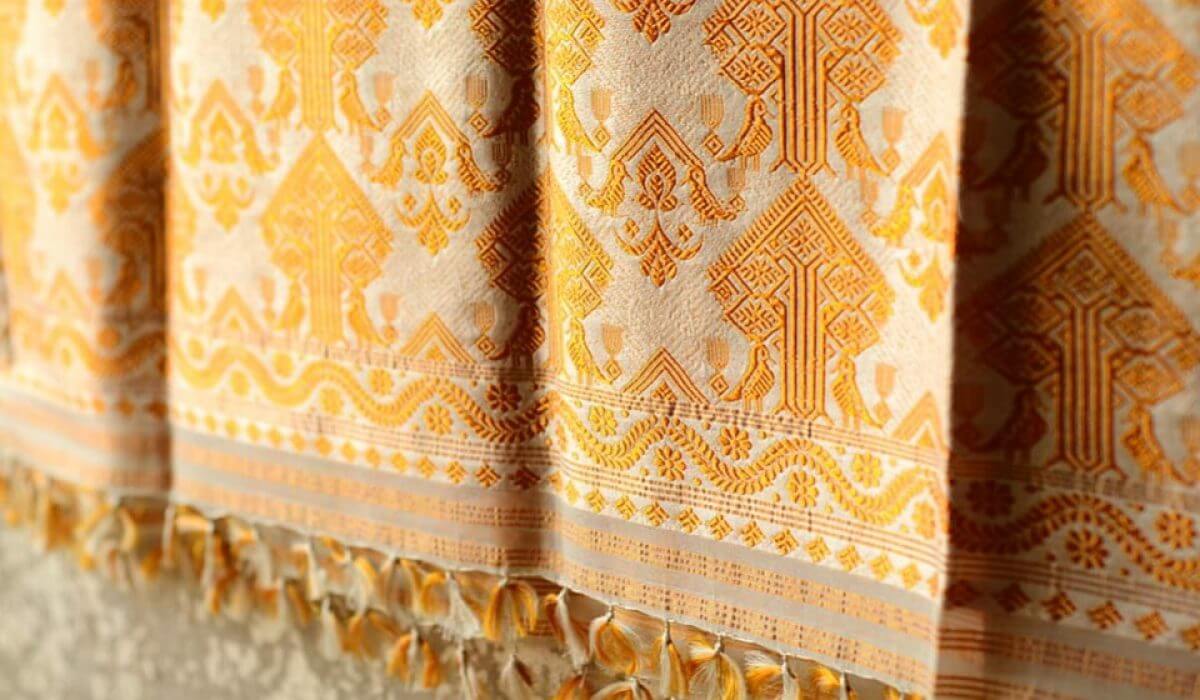Mekhela Chador – the very name makes all Assamese women excited. It is the traditional dress of the Assamese women. Mekhela Chador is a beautiful three piece dress worn by women in the state of Assam.The Mekhala is a cylindrical piece which is worn over an underskirt and the chador is about 2.8 meters long and is draped over the body. The third piece is called Riha, which is worn between the Mekhala and Chador. The Riha is worn only on special occasions like marriages and festivals like Bihu. For day to day wear, Assamese women wear only two pieces.
Assam is world famous for three types of silk. The white or cream coloured Paat silk, the warm and soft silk known as Eri silk and lastly, the pride of Assam, the golden Muga silk.
The most extensively used silk is Paat silk, as it can be dyed in a variety of colours. The Eri silk is mainly used for making shawls and jackets, as it is lightweight and warm. Eri silk becomes better with age as it becomes softer after every wash. The golden silk Muga is produced by the silkworm known as Antheraea Assamensis, endemic to Assam. Due to its low porosity, this silk cannot be dyed and so its natural golden colour is retained. This makes it very distinctive and unique.
Muga Mekhela Chadors are a heirloom which is often passed on to the next generation with great pride. Its durability and strength is unmatched to any other type of silk in the world.
The main weaving centres of Assam are in Sualkuchi, which is about an hours drive from Guwahati and can be explored on our Best of Assam tour. In Sualkuchi, almost every household is engaged in weaving of some kind.
These days, the cotton Mekhela Chadors or “Bua” are also becoming very popular. It comes in lots of different colour combinations and are quite affordable. It is also comfortable to wear in the hot and humid climate of Assam.
When it comes to design, there are a lot of different traditional motifs. The most popular motifs are Gosa (house), Meenakari (jewels), Khingkhap (emblems), Lotaphul (flowers), Gos (trees), Mayur (Peacock), etc. Also, due to new age designers, the Mekhela Chadors are undergoing some changes. Mew material are being used like cotton, chiffon etc to attract the younger generation and appeal to a larger audience.
The Mekhela Chador is more than a garment for the Assamese people. It is a sense of identity and belonging. It is comforting and encouraging to see that this centuries old tradition has managed to retain its essence and yet evolve to suit the needs of modern Assam.




